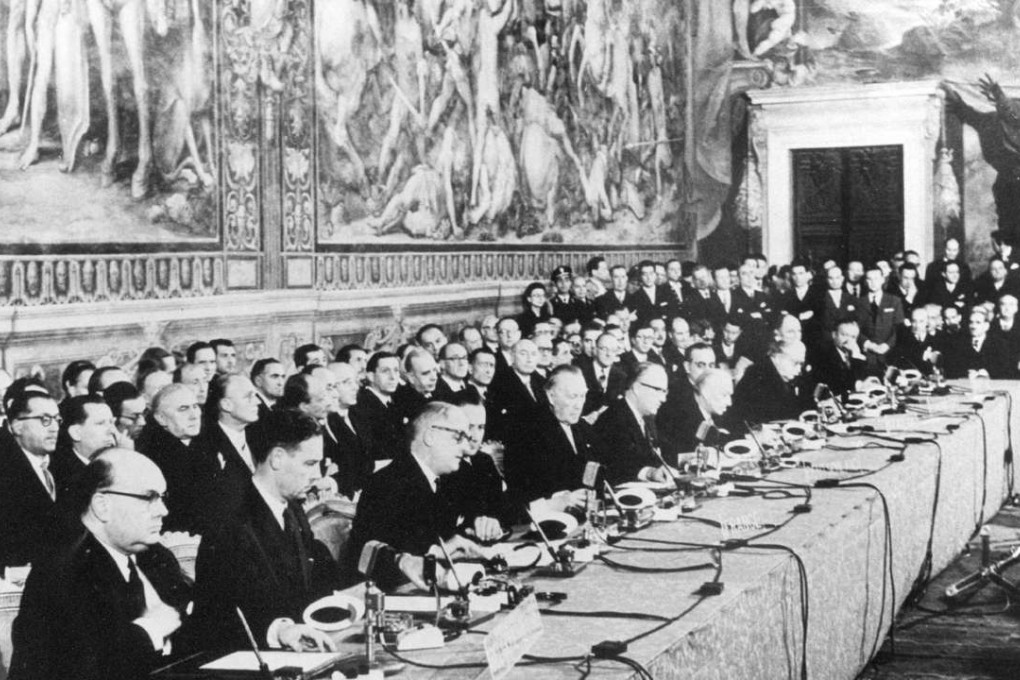Tracing the EU’s beginnings through the pages of the SCMP

Britain’s contentious relationship with the European Union stretches back to the organisation’s earliest days as a coal and steel trade agreement.
In the wake of the second world war, with European economies in tatters, the idea of a common market gained traction as a way of both rebuilding and easing political tensions.
Despite humble beginnings as a French-German coal and steel trade alliance, the appeal of cooperating to create the European Coal and Steel Community (ECSC) soon gained support from Italy, Luxembourg, Belgium and the Netherlands.
The ECSC was recognised as the start of a new era, though its supporters could hardly have known it would be far more influential as the precursor to the EU than in spurring coal or steel trade.
The South China Morning Post documented its significance on March 19, 1951, with the headline “Six Nations Sign Historic Treaty”. Notably missing from the cooperative effort was Britain, which, the Post noted, had “refused to join”.
